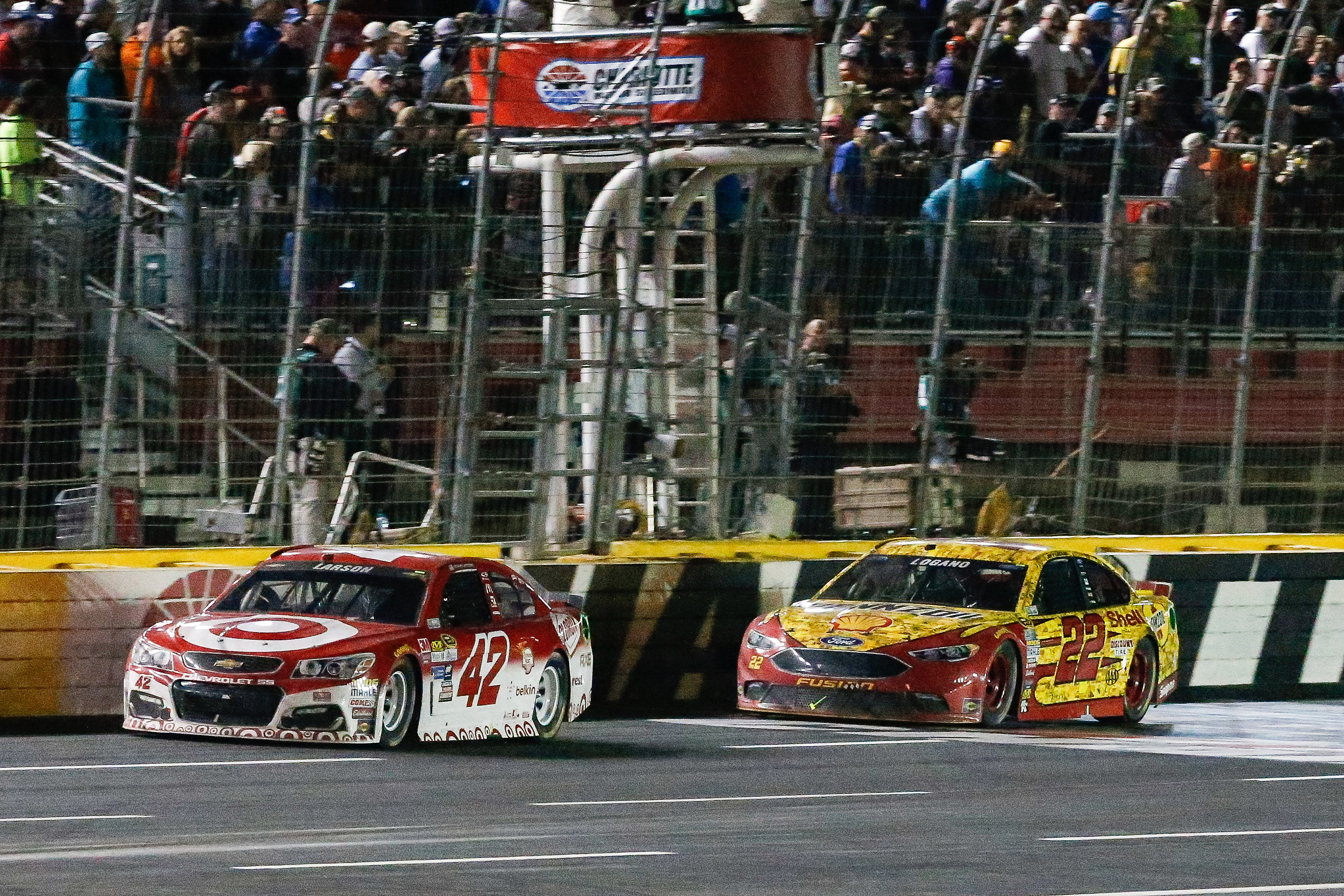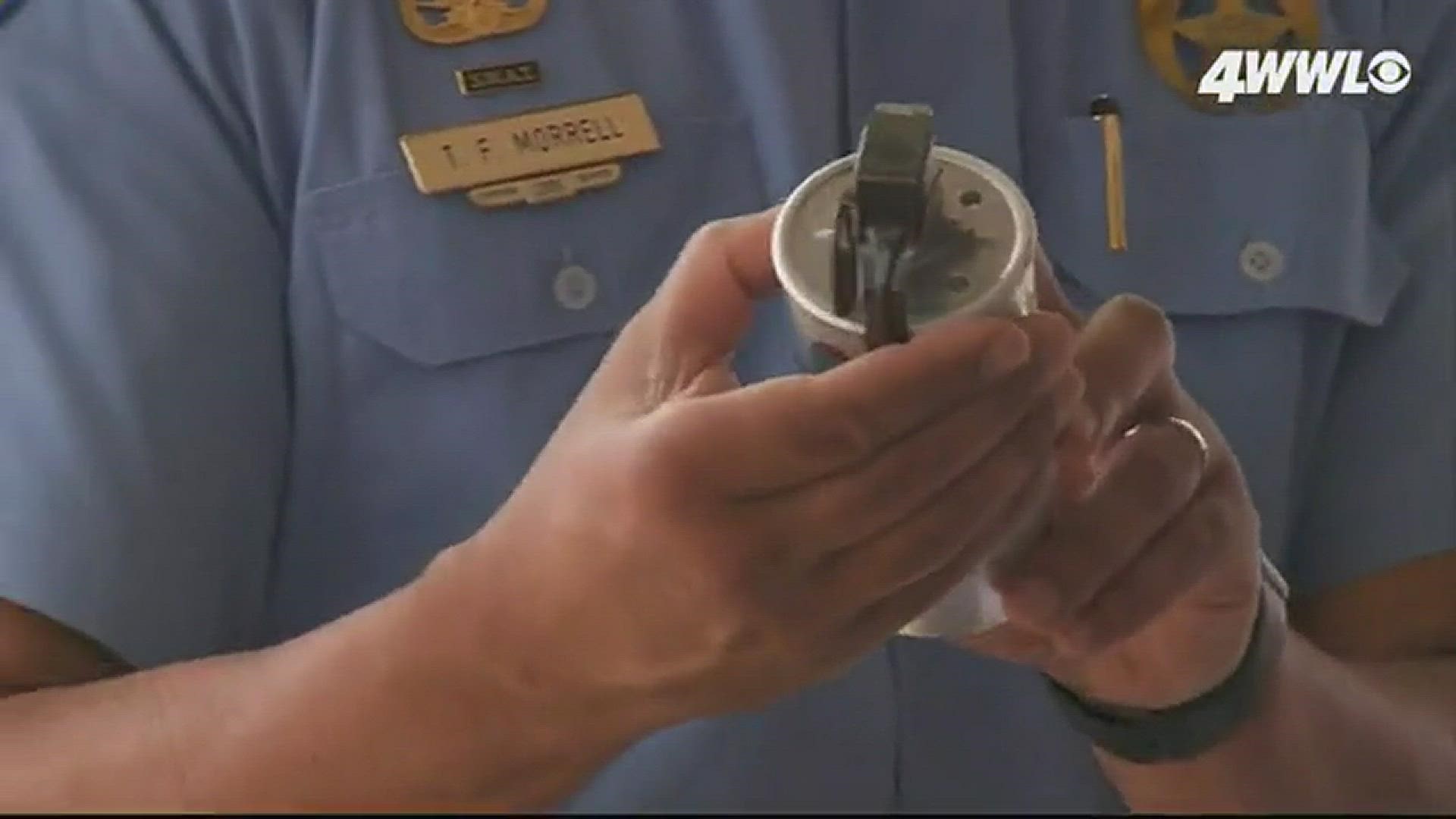![NASCAR: Nascar Sprint All-Star Race [image : 84742222]](http://www.gannett-cdn.com/media/2016/05/22/USATODAY/USATODAY/635995138900390616-USATSI-9304260.jpg)
CONCORD, N.C. — Think fast: When is the last time there was a side-by-side battle for the race lead in the final laps of the NASCAR Sprint All-Star Race?
It certainly hasn’t been in recent memory. Most editions of the event over the last few years turned into a race to Turn 1; whoever snatched the lead in the final segment used clean air and hard tires to zoom off for an uncontested victory.
But on Saturday night, Joey Logano and Kyle Larson were door-to-door with two laps to go in an entertaining battle. And clean air was a total non-factor.
Unfortunately, the complex race format — and NASCAR’s officiating of a fluke circumstance — overshadowed what was actually good racing.
The 2016 version won’t be remembered fondly for that reason, but there are three positives to take away from Charlotte Motor Speedway:
![Gluck: Joey Logano takes bizarre Sprint All-Star Race [oembed : 84742224] [oembed : 84742224] [oembed : 84742224] [oembed : 84742224] [oembed : 84742224] [oembed : 84742224] [oembed : 84742224] [oembed : 84742224] [oembed : 84742224] [oembed : 84742224]](/Portals/_default/Skins/PrestoLegacy/CommonCss/images/smartembed.png)
1. The new aerodynamic rules and new tire compound worked.
Prior to the All-Star Race, NASCAR made more tweaks to its lower downforce rules package — and they seemed to be a success.
Overall, the quality of the racing this season has been the best in years. Drivers can actually pass one another instead of getting stuck in a bubble of dirty air behind another car.
And that was shown in several different ways Saturday, particularly in the last segment.
On the final restart of the race, Jimmie Johnson and Kyle Busch were positioned on the front row with older tires. In the past, one of them might have won the race thanks to clean air and a tire that didn’t wear out very much.
In fact, the situation had grown so desperate in recent years that Brad Keselowski sped on pit road in 2015 in order to get out front (he figured anything but first place would lose the race).
But this year, clean air wasn’t the winner. Not only were Johnson and Busch passed quickly by those with fresher tires, but Logano was able to track down Larson for the race lead several laps later and actually get by him.
That would have never happened in the past few years, so that’s another promising sign of improved racing.
2. The future looks bright.
Earlier this decade, there was cause for concern that not enough talented young drivers were making their way through the ranks to fill the seats of soon-to-be retiring veterans.
Recently, though, there’s reason for optimism. Larson, Chase Elliott, Ryan Blaney and Austin Dillon have all shown speed and talent this season, and the Larson/Elliott battle in Saturday’s Sprint Showdown event might have been the most fun of all the great finishes this season.
Larson in particular has been a joy to watch in the last couple weeks. He raced hard but cleanly with Matt Kenseth at the end of the Dover International Speedway race, but ended up losing, then seemed to make a conscious decision not to let that happen again.
So as Elliott appeared to be making the winning pass for the final transfer spot in the Sprint Showdown, Larson intentionally made contact with the No. 24 car and roughed him up all the way to the finish line. It worked, and Larson made the main event, where he ultimately pushed Logano to the limit before hitting the wall.
Saturday was another reminder there seems to be a new wave of young guns that aren’t just hyped for marketing purposes. They’re for real. And after four of the last six Rookies of the Year failed to keep rides in the Cup Series, the fresh talent is a welcome development for NASCAR.
![Intense Sprint Showdown sets scene for Saturday night's All-Star Race [oembed : 84744196] [oembed : 84744196] [oembed : 84744196] [oembed : 84744196] [oembed : 84744196] [oembed : 84744196] [oembed : 84744196] [oembed : 84744196]](/Portals/_default/Skins/PrestoLegacy/CommonCss/images/smartembed.png)
3. NASCAR acknowledged fault.
There have been many times over the years when reporters gather at the back of the NASCAR hauler for an explanation on rules and don’t receive one.
Instead, the media’s questions have on occasion been openly scoffed at — as if there’s no validity in seeking clarification on controversial incidents or decisions.
But on Saturday night, Scott Miller, in his first year as NASCAR’s senior vice president of competition, took the heat and admitted the confusion was partly NASCAR’s fault.
It’s not that he was happy about the development, but at least the former crew chief didn’t try to deflect the blame. Essentially, he acknowledged officials did not foresee the scenario that unfolded when Matt Kenseth failed to make his mandatory pit stop in the first segment.
The incident resulted in angry and confused drivers, because NASCAR did not let the cars Kenseth had trapped one lap down return to the lead lap with the typical wave-around policy.
Then there was no way to undo the misstep, and the race format — which had counted on as many as 20 cars on the lead lap heading into the final segment — didn’t go according to plan (there were only 13 lead-lap cars).
The whole thing was disappointing and unfortunate for everyone, but at least NASCAR’s heart was in the right place with trying the new format. Officials tried to come up with something unique and exciting to spice up the All-Star event, but an unforeseen consequence created a wrinkle that spoiled the night.
Unfortunately, officials weren’t able to anticipate what happened with Kenseth. But unlike in the past, at least NASCAR owned up to it.
Follow Gluck on Twitter @jeff_gluck


![2016 NASCAR Sprint Cup race winners [gallery : 81743616]](http://www.gannett-cdn.com/-mm-/5163f6686f795b40f840f16d79759d81c60ebfed/c=464-276-3842-3163/local/-/media/2016/05/22/USATODAY/USATODAY/635994745346001223-USP-NASCAR-NASCAR-SPRINT-ALL-STAR-RACE-82065995.JPG)
